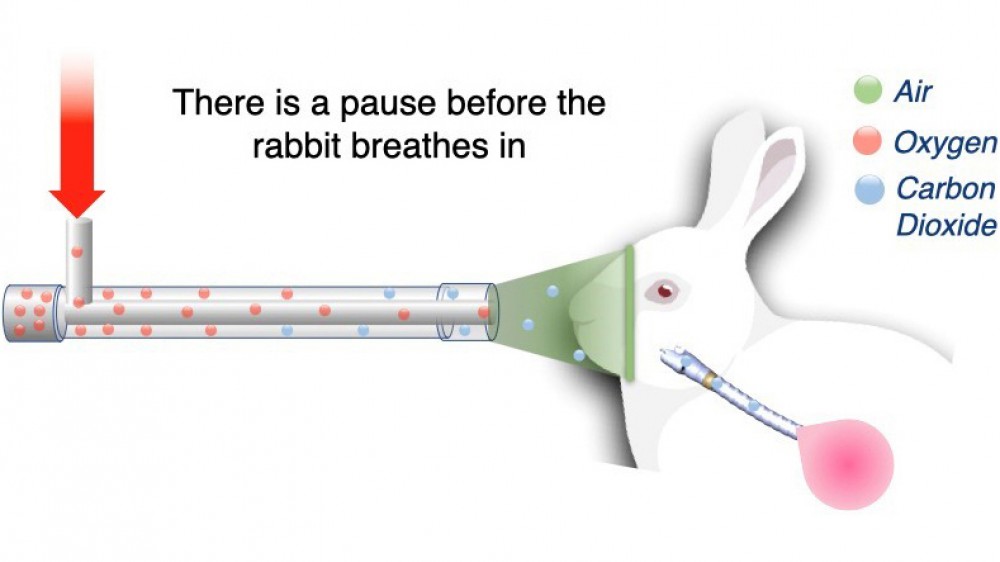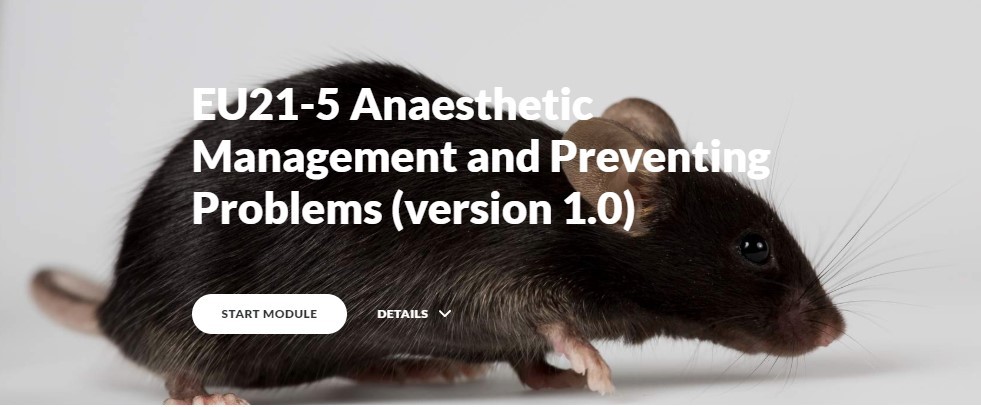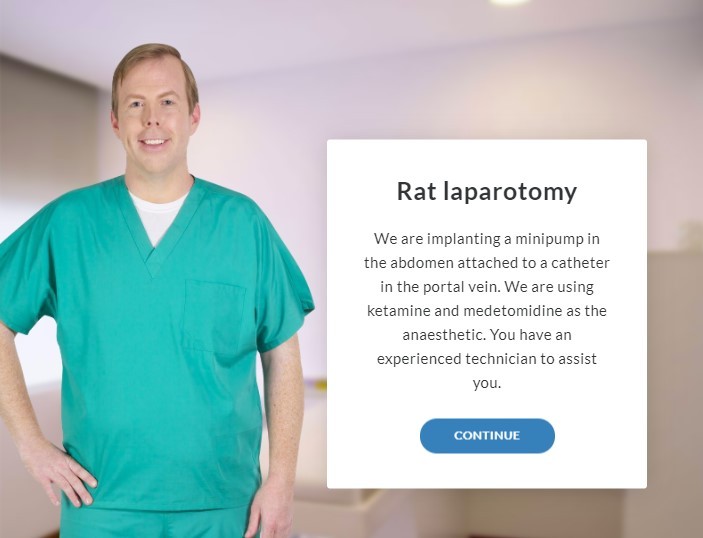E-learning and the 3Rs

In this guest blog post, Professor Paul Flecknell and Jon Gledhill of FLAIRE Learning share the e-learning resources they’ve developed for those working with laboratory animals and how e-learning can complement more traditional training approaches.
While the current global situation has brought e-learning further into the spotlight, FLAIRE Learning has been working since 2014 to support the training of those working with laboratory animals through developing e-learning resources. Previous funding from the NC3Rs enabled us to develop modules for pain and distress assessment (EU5), euthanasia (EU6) and anaesthesia (EU20). Our current work, also funded by the NC3Rs, will deliver eight modules that encompass the learning outcomes for advanced anaesthesia (EU21).
Modules 1 and 2 in this series were launched in August last year and modules 3, 4 and 5 will be launching on Monday 11 May. These new additions cover anaesthetic monitoring, breathing systems and how to cope with problems and emergencies. They provide a mix of easy-to-access information and problem-solving scenarios. As with other modules, lessons are interspersed with questions to allow for self-assessment.
You may wonder why we have spent so much time and effort on developing e-learning modules – isn’t it easier to deliver some seminars every few months? One of us has spent several weeks every year for the last few decades doing just that, and would never want e-learning to replace this form of training. However, COVID-19 has forced the research community to consider different approaches to learning, which has led us to think more about what each approach has to offer.
When we first started working on e-learning, we developed a “script” and assorted support materials. As we reviewed our work, we made our first realisation about the benefits of an e-learning package: it consistently delivered material that addressed all the required learning outcomes. The second realisation we made was that audiences, however highly motivated, have a limited attention span (allegedly around 10 minutes, though the evidence base for this is very poor). One approach used by lecturers is to break up the lecture with questions – sometimes we even get answers! This approach is also easy to implement in e-learning, and it can even go one better by requiring the student to provide an answer.
Another key advantage that we’ve found in blending face-to-face sessions with e-learning is that it allows students to take some control of when and where they learn. Many training courses are delivered in intensive sessions over a number of days. This may suit some participants who otherwise could not devote time to training, but for others it may prove disruptive to their work schedule. It also doesn’t allow participants to mix learning activities with other tasks. The added flexibility of a blended approach supports those who want to learn in intense bouts, but also those who want to integrate training into their overall workload. Making e-learning resources available on mobile devices and breaking up material into short lessons makes it even easier for people to make use of otherwise unproductive chunks of time – for example, the 30 minutes spent waiting for a lab test to provide results.
So, if we integrate e-learning into our training courses and it covers the required learning outcomes, what do we do in our face-to-face sessions (whether online or in person)? What we shouldn’t do is simply deliver the material in a traditional lecture format. Instead, we can use this time for interactive discussions, focusing on areas that seem to have been less well understood, which could be informed by metrics provided by e-learning. These sessions can also provide context relevant to participants within their particular research area or institution. Overall, lecturers and tutors will often need to dedicate less time to planning and running face-to-face sessions, freeing up time for other tasks.
The training of new research workers often requires an ambitious set of learning outcomes to be delivered in a very short time. As well as resources for initial delivery, trainers also need resources that can provide ongoing information or be used for refresher training. E-learning is one way for us to deliver these resources, and we are grateful to the NC3Rs for their continued support of our work.
Visit our resources library to find links to NC3Rs-funded training modules and further e-learning resources.

Eight modules are now available via the Research Animal Training website.

Scenarios are used to deliver a problem-based approach to dealing with emergencies.

New animations illustrate how commonly used breathing systems function.
